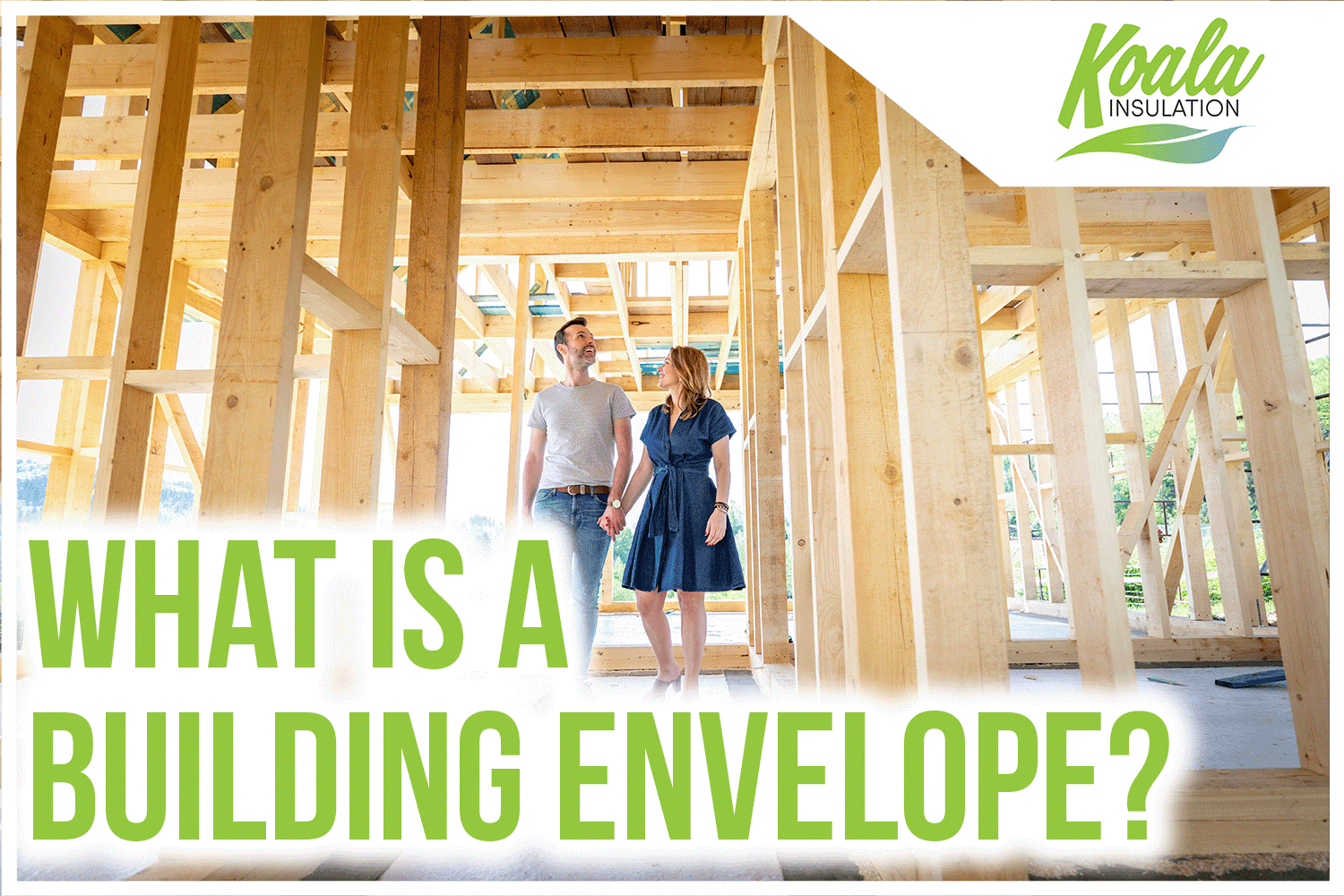
Understanding Insulation: What is a Building Envelope?
Understanding Building Envelopes
A building envelope is considered the divide between the interior and exterior of a structure. Its main goal is to improve the climate control capabilities inside the building. The exterior system of a building envelope includes windows, doors, the roof, floors, and even the foundation and insulation. Although the primary function of your home's building envelope is to maintain a climate-controlled interior, it can also support the strength of the house's structure, improving how well the building can handle external forces and weight.
When you begin to experience irregular temperatures, poor indoor air quality, and problematic air leakage, your home could be suffering from a poorly supported building envelope. Maintaining this is crucial to effective climate control throughout the building in order to improve comfort and safety. When you make an effort to support and improve the building envelope and exterior system, you improve your energy efficiency while also reducing potential health risks.
You can provide support by updating your home’s insulation and air sealing, helping the structure to easily keep desired warmth inside during the winter and prevent unwanted heat in the summer. While this primarily helps to reduce the stress put on your HVAC system, it also prevents the intrusion of outdoor pollutants and pests.
Why A House May Suffer Irregular Temperatures
Insulation and air sealing are a key line of defense for your home, working as a significant contributor to maintaining a strong and efficient building envelope. This is largely thanks to the fact that these materials all have a common goal: improving climate control and temperature regulation within the house.
As a homeowner, you’re most likely already aware of the insulation material that can easily be found inside the attic. But were you also aware that insulation can be found throughout the entirety of your home? Blown-in, batts, and spray foam material can all be applied inside your walls, under the floors, in between ceiling joists, and even throughout your basement and crawl spaces. While the Department of Energy has a breakdown of guidelines and basic requirements to insulate a home, the specific needs and codes for your house can vary depending on where you live.
Insulation’s primary function is to reduce the flow of heat transfer; this is the rate at which heat moves through a structure. The effectiveness of a material’s ability to slow heat transfer is measured using the insulation’s R-value, which is short for resistance value. This numerical value will depend on the material (fiberglass, cellulose, spray foam, etc.) and the type (batt, blown-in, etc.). For example, blown-in fiberglass has an average R-value of 2.7 per inch but fiberglass batts can have an R-value between 3.1 and 3.7. To learn more about calculating R-value and its effects on heat transfer, check out Koala Insulation of Greenville’s explanation in How Insulation Works.
It's important to remember that the material within your home isn't just working to keep outside temperatures from influencing the environment inside your home. Insulation and air sealing are installed throughout the house because they can also help to regulate the temperature between each room and different floors. One of the first signs that can alert homeowners to deteriorated, damaged, or poorly installed insulation is if there's one room or even an entire side of the house that's consistently too hot or cold in comparison to the rest of the house.
Although there are some insulation materials that have a lifespan of 15 years, damage from problems like pests, moisture, and other disturbances can exponentially increase the rate of deterioration. This is why regular evaluations and inspections are crucial. Catching the deterioration early on can prevent you from energy waste, higher bills, and other problems that can increase your costs.
How Can Insulation Support A Building Envelope?
Properly installed insulation that has sufficient and effective coverage in the necessary areas of a building provides the best form of support to your home’s building envelope. The insulation works together with the building envelope to improve temperature regulation and maintain climate control while also reducing the influence of outdoor temperatures on your interior environment.
In addition to quality temperature regulation, many materials can contribute to the safety and integrity of your house. There are a number of insulation materials that are treated with chemicals or have natural properties that help to resist moisture and fire or deter the infestation of pests. If your home is affected by mold growth, bacteria, infestation, and heat damage, your building envelope can be at risk right along with the insulation material. In addition to significantly increasing the rate of deterioration of your material, these problems can also compromise the structural integrity of your building.
On top of reducing the risks from outdoor pollutants, insects, and moisture, there are some materials that can also support the structural integrity of your home. For example, closed-cell spray foam is rigid when installed in the walls and ceiling, providing additional strength to the joists and surfaces it's applied. It also has an average R-value of 6.9 per inch, which is one of the highest values out of the common materials. This means less needs to be applied to resist the transfer of heat. When choosing the right insulation material to support your building envelope, it's important to consult an industry expert that can point you in the right direction for cost-effective and energy-efficient solutions that meet the unique requirements of your home.
Find The Right Team For Your Home’s Needs
At Koala Insulation of Greenville, our team of industry professionals is dedicated to improving our community by helping our neighbors increase the comfort and safety of their homes. We offer free evaluations in order to provide you and your household with a thorough breakdown of the current condition of your home’s insulation and air sealing. From there, you can make informed decisions on targeting pain points while planning ahead for future needs. If you’re interested in learning how insulation and air sealing can impact your environment, contact Koala Insulation of Greenville today and schedule your free evaluation.
Ready to book your free insulation evaluation?
We have 3 convienant ways for you to get in touch
We Provide Insulation Services to the Following Greenville Areas
DUNCAN, LANDRUM, LYMAN, GREENVILLE, GREER, TAYLORS, EASLEY, TRAVELERS REST, BELTON, FOUNTAIN INN, MAULDIN, PELZER, PIEDMONT, SIMPSONVILLE, WILLIAMSTON
Counties Served
SPARTANBURG, GREENVILLE, PICKENS, ANDERSON, LAURENS
Zip Code
29334, 29356, 29365, 29615, 29650, 29651, 29687, 29601, 29605, 29607, 29609, 29611, 29613, 29614, 29617, 29640, 29642, 29690, 29627, 29644, 29662, 29669, 29673, 29680, 29681, 29697

